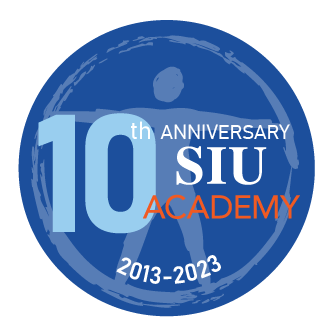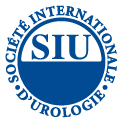The Clinical Frailty Scale as a Predictor of Trial of Void Outcomes in Men Undergoing Transurethral Resection of Prostate Surgery
Abstract
Background With the growing elderly population, there is an increasing prevalence of frail patients undergoing
surgeries. A common operation in this group is the transurethral resection of prostate (TURP) for the treatment of
benign prostatic hyperplasia. Whilst there is a demonstrable link between frailty and general adverse postoperative
outcomes, there is limited research on frailty and trial of void (TOV) outcomes post TURP.
This study aims to investigate possible associations between frailty, TOV outcomes, and postoperative complications
following a TURP.
Methods A retrospective review was conducted of adult patients treated with TURP at 2 hospitals from January
2018 to December 2019, inclusive. Patient demographic data, preoperative Clinical Frailty Scale scores, trial of void
outcomes, and complications were recorded and analysed. Clinical frailty scores (CFS) were recorded in accordance
with the Dalhousie University Clinical Frailty Scale, ranging from 1 (very fit) to 9 (terminally ill).
Results A total of 226 patients (median age 70.5 years) were identified for this study. Of these patients, 59 were
identified as having a CFS of 1 to 2 (Group A), 140 patients had a CFS of 3 to 4 (Group B), and 27 patients had a CFS of
5 to 7 (Group C). Within the initial TOV, Group C had a statistically significant difference in failure rates compared
with the other 2 groups, with Group C having the highest failure rate of 33.3% (9/27), followed by Group B with 14.3%
(20/140), and then Group A with 13.6 % (8/59) (P = 0.04).
Conclusion In conclusion, greater preoperative frailty is associated with higher rates of initial TOV failure in post-
TURP patients. Early objective identification of elderly patients with increased frailty is useful to help preoperative
counselling and decision-making, to manage patient postoperative expectations, and to optimise patient care.
The Société International d'Urologie (SIU), which owns and publishes the Société International d'Urologie Journal (SIUJ), does not require authors of papers published in the journal to transfer copyright. Instead, we ask authors to grant an exclusive licence that allows us to publish the article in SIUJ (and any derivative or related products or publications) and that allows us to sub-license such rights and exploit all subsidiary rights.
Authors retain the right to use their own articles for their own non-commercial purposes without seeking explicit permission from SIU.
The SIUJ publication licence expressly defines “non-commercial” as “not primarily intended for or directed towards commercial advantage or monetary compensation.” Although no activity is completely disconnected from commercial activity, the following are generally considered to be non-commercial uses:
- Reproduction of a reasonable number (no more than 100) of print copies of the published paper for personal use (e.g., sharing with colleagues, including in grant applications).
- Posting a copy of the published version of the paper on the author’s own or their institution’s website. The article must be accompanied by this statement: ‘This article has been published in the SIUJ: [full citation; link]’.
- Inclusion of the paper in a course pack, with a maximum of 100 copies to be used in the author’s institution. The copies must include the following acknowledgement: ‘This article has been published in the SIUJ: [full citation; link].’
As the distinction between commercial and non-commercial is not always clear, authors are strongly advised to seek permission from SIU for any use that may be considered to have a commercial aspect.
We ask the corresponding author to read the terms of the licence and then to grant this exclusive licence on behalf of all authors by indicating agreement to the following statement:
The corresponding author has the right to grant on behalf of all authors and does grant on behalf of all authors, an exclusive licence on a worldwide basis to the SIU and its licensees to permit this article (if accepted) to be published in the SIUJ and any other SIU products and publications and to exploit all subsidiary rights, as set out in our licence agreement.
Review and Decision
Most submissions will be reviewed by a senior editor within 2 weeks. Many manuscripts will be rejected at this point for a variety of reasons, including subject matter outside the scope of the SIUJ, flawed design, discredited or outdated methodology, poor organization or presentation, failure to conform to ethical requirements, and apparent plagiarism.The remaining manuscripts will be sent for peer review. The SIUJ uses a single-blind process: reviewers know the identity of the authors, but the authors are not told who has reviewed their manuscript, and SIUJ ensures that potentially identifying information is removed from comments sent to them. Reviewers are asked to make their recommendations within 10 days, after which a senior/specialist editor will consider their comments and recommend provisional acceptance dependent on satisfactory revision, acceptance without revision, or rejection. Authors should receive a final decision within 4 to 6 weeks of submission.











